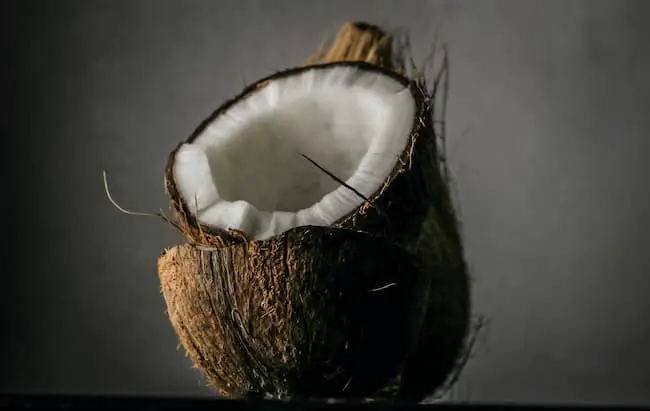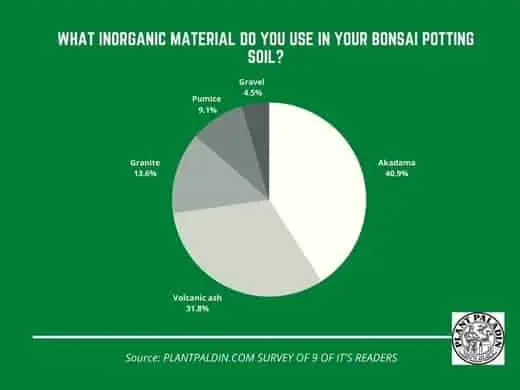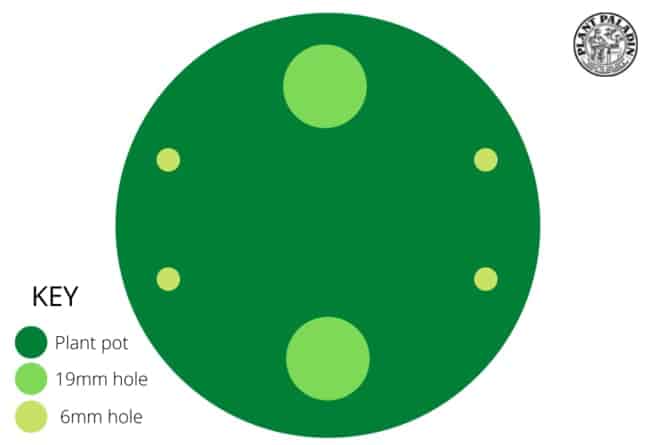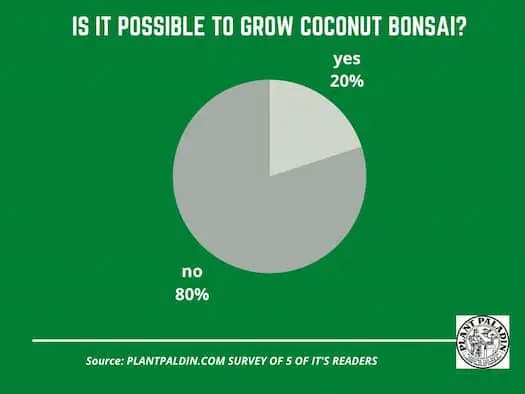This website is supported by its readers. If you click one of my links I may earn a commission. I am also a participant in the Amazon affiliates program and I will also earn a commission from qualified purchases.

So last month, I took my first holiday in a few years and went to Indonesia. Being the bonsai nut I am (and unable to switch off), I came across quite a few coconut bonsai trees. Can you Bonsai a coconut tree with these trees being so different from regular bonsai tree species?
You can Bonsai a coconut tree; however, this Bonsai will be significantly more challenging to grow than other species. Coconut trees do not have branches or cambium, meaning creating specific bonsai styles will be challenging but possible.
So, what species of coconut tree works best for Bonsai? And what are the advantages and disadvantages of growing coconut bonsai? Keep reading to find out more!
Just a quick heads up, over the past three years of running Plantpaladin, hundreds of people have asked for product recommendations. As such, You can find my favorite indoor bonsai tree here (link takes you to Bonsaiboy), my favorite outdoor bonsai tree (link takes you to Bonsaiboy), or have a look at all the products I recommend here.
Can you grow a coconut bonsai tree?
To determine whether you can grow a coconut bonsai tree, I contacted my local gardener and my local botanical gardens, asking them if it is possible to grow a coconut bonsai.
I also contacted five plant paladin readers, asking them if it is possible to grow a coconut bonsai.
To summarise:
- You can indeed grow a coconut bonsai tree.
- However, this will look stylistically very different from other bonsai trees.
- The main reason is that the tree is a palm tree, meaning it will not have any branches or cambium.
- This can make it difficult to style into more advanced bonsai tree styles such as cascade or semi-cascade.
- Growing a coconut bonsai tree will be challenging, mainly because coconut trees dislike being grown in pots and prefer the sand/soil.
- On top of this, coconuts have a taproot and, instead, grow out of the coconut, making them challenging to repot.
- The best species for coconut bonsai include Malayan dwarf, Fiji dwarf, and Maypan coconut trees.
Coconut bonsai care table
Care Aspect | Coconut Bonsai Care Guidelines |
Watering | Keep the soil moist but not waterlogged. Water when the top inch of soil feels dry. Use well-draining soil. |
Temperature | Maintain warm temperatures between 70°F to 90°F (21°C to 32°C). Avoid exposing the bonsai to temperatures below 50°F (10°C). |
Sunlight: | Provide bright, indirect sunlight. Coconut bonsai trees thrive in full sun but should be protected from scorching midday sun. |
Fertilizing: | Use a balanced, slow-release fertilizer during the growing season (spring and summer). Reduce or stop fertilization in late fall and winter. |
Growth Rate | Coconut bonsai trees are slow growers, with an estimated growth rate of 2 to 6 inches (5 to 15 cm) in height per year. |
Winter Care | Protects the bonsai from cold temperatures, ideally by bringing it indoors or in a greenhouse. Maintain a minimum temperature of 60°F (15°C). Reduce watering during winter, allowing the soil to partially dry between waterings. |
Fruit Production | Coconut bonsai trees can produce miniature coconuts, but fruiting is rare and may not occur in indoor or container-grown specimens. If fruiting occurs, providing the right conditions for the coconut to mature is essential. |

How to make a coconut bonsai?
So now we know that it is indeed possible to grow a coconut bonsai, what are the exact steps you need to follow to do so:
- Ensure it’s the right time of year.
- Come up with a design and decide how large you want your Coconut tree to grow.
- Invest in suitable potting soil.
- Plant your tree
- Move your coconut tree into the right environment.
- Prune the tree
- Repeat the process
Let’s dive into more detail on the individual steps:
Ensure it’s the right time of year.
Before transforming a Coconut tree into a Coconut bonsai, it’s important to note the time of year.
You can plant coconut trees can be planted any time of year in tropical environments; aim to start work on your coconut bonsai in the summer months.
This will give the tree the best chance of survival going forward.
This means Coconut trees will need weeks of recovery time between training methods.
If you keep your Coconut tree bonsai in a greenhouse, the training process can be done any time of the year.
Come up with a design and decide how large you want your Coconut tree to grow.
Now, this step is super important to follow through on.
Unlike other bonsai trees that typically grow about 30cm tall, coconut trees are notorious for growing to high heights.
As such, it’s vital to decide early on how tall you want your Bonsai to become and stick with it.
On top of this, as mentioned, these trees are different from other Bonsai, such as Chinese elm, as they don’t have branches or cambium, making them challenging to create things like nebari.
As such, we aim to develop simple designs for the best results, such as an upright formal tree.
Invest in suitable potting soil.
So, once you’ve come up with your design, it’s time to create a suitable potting soil for your coconut bonsai.
All the best potting soils then need to work for tropical palm trees and Bonsai.
What is the best potting soil for coconut bonsai?
The best potting soil for coconut bonsai is a 30-30-30 split between sand, lava rock, and akadama. This will give the perfect blend of aeration and moisture retention, ensuring that your coconut bonsai will thrive.
Aim to ensure that your soil has a neutral PH level. Coconut bonsai can thrive in PH levels between 5 and 8.

Gather your pot.
Next, you must grab your pot and plant your coconut bonsai.
Now, most bonsai trees will be planted in shallow, easy-to-access pots. However, this will be different for coconut bonsai.
This is mainly because coconut seeds are massive and will be bigger than most traditional bonsai pots.
Now, the exact size of your bonsai pot will depend on the stage of its life, but the following should give you a good insight into how to grow your Bonsai:
- Seedling Stage: Start with a small pot, typically 6-8 inches (15-20 cm) in diameter. This will be sufficient for the initial stages of growth when your coconut seedling is young. Ensure that the pot has drainage holes to prevent waterlogging.
- Gradual Upsizing: As your coconut palm seedling grows, you’ll need to gradually transplant it into larger pots to accommodate its increasing size. Each time you repot, choose a pot slightly larger than the previous one. The rate of upsizing will depend on how fast your coconut palm is growing but expect to repot every 1-2 years.
- Mature Bonsai: If you aim for a mature coconut bonsai, you may eventually need a pot at least 12-16 inches (30-40 cm) or larger in diameter. Remember that the pot should be in proportion to the size of the tree. The exact size will vary depending on the specific style and design you want to achieve.
Aim for the pot to have around 6 to 8 pencil-sized holes for adequate drainage.

Plant your tree.
Next, it’s time for the fun stuff – Planting your tree!
Now, coconut bonsai can only be grown directly from seed – aka the coconut.
Aim for the coconut to be about one year old before fertilizing so they are mature. Most coconuts under one year old will not result in a fully-grown tree.
To plant, then gently place potting soil in your pot until about half full.
Then, make an indentation and place your coconut in the pot with the pointy side facing down.
Water regularly to ensure the topsoil is damp.
The coconut should then be submerged halfway under the soil for best results.
After about six months, the coconut will sprout, and you can repot it into a bonsai pot.
How to speed up the growth process
I appreciate if you are impacted; waiting a few months for your coconut to sprout can be frustrating.
As such, to speed up the process, consider planting the coconut in a plastic bag with several holes to increase the moisture in the tree.
Move your coconut tree into the right environment.
Once your bonsai tree has started to sprout and grow, you need to move it into the right area.
Coconut bonsai then requires a lot of heat and sunlight.
Consider keeping this tree outdoors year-round if you live in a warm climate.
However, most of us live in much colder environments than the 65F needed to grow these trees successfully.
As such, you can keep these trees indoors, near a south-facing window, so that they get plenty of bright light.
Now, you need to ensure these trees have a constant temperature, so consider moving them into a room with a consistent temperature, or for better results, consider planting them in a greenhouse to replicate the bonsai trees’ tropical environment.
Prune the tree.
After a few months, you will need to start pruning your Bonsai.
Now, as mentioned, this will be much trickier than a traditional bonsai as, well, there are no branches.
Instead, you will need to trim back the top leaves.
I found that pruning shears work best for this, cutting teach leaves at a 45-degree angle to ensure they remain palm-like and small enough to keep their bonsai size.
Repeat the process
Finally, once completed, every few months, you will need to repeat the trimming, pruning, and repotting process to ensure that the tree remains the same size and maintains its bonsai shape.
How do you care for a coconut bonsai tree?
So now we know how to grow a coconut bonsai tree, how do you manage the tree’s day-to-day care?
Like all bonsai trees, you will need to look after the following:
- Watering
- Temperature
- Pests
- Sunlight
- Repotting
- Fungal and bacterial infections
- Fertilizing
So let’s explore this in a little bit more detail:
Watering
Watering a coconut bonsai is straightforward.
Before watering, always check the moisture level of the soil. Stick your finger about an inch (2.5 cm) deep into the soil near the edge of the pot. If it feels dry at this depth, it’s time to water.
Coconut bonsais prefer slightly warm water. Water at room temperature or slightly warmer is ideal. Avoid using cold water, as it can shock the roots.
Using a watering can with a fine nozzle or a spray bottle to apply water evenly works best.
After watering, ensure no excess water is sitting in a saucer or tray beneath the pot. Empty any excess water to prevent the roots from sitting in water, which can lead to root rot. Typically, watering once to twice per week is enough for your tree; however, adjust as the seasons go on.
In addition to regular watering, misting the leaves of your coconut bonsai with room-temperature water can help maintain humidity levels around the plant, especially in dry indoor environments.
If possible, use clean, filtered water or tap water that has been allowed to sit for at least 24 hours to allow any chlorine to dissipate. Coconut palms are sensitive to chlorine and salts in tap water.

Temperature
Coconut bonsai thrives in warm temperatures.
Aim to keep your coconut bonsai between 65 to 90F for best results. The optimal temperature for growing coconut bonsai will be 85 degrees F (29 degrees C).
In winter, trying to keep these trees as much above freezing as possible is essential.
Pests
Like many other outdoor bonsai trees, they are attacked frequently by other pests. These include:
- Aphids
- Scale
- Mealybugs
- Whiteflies
- Caterpillars
To help explain more, I’ve put them in a table below, which should explain just how damaging they are as well as how to overcome them if they infect your Bonsai:
Pest | Impact on Coconut Bonsai | How to Get Rid of Them |
Aphids | Moderate to High | - Spray with insecticidal soap or neem oil. |
Scale Insects | Moderate to High | - Remove with a soft brush or cloth. - Apply neem oil. |
Mealybugs | Moderate to High | - Remove with a cotton swab dipped in alcohol. - Apply neem oil. |
Spider Mites | Moderate to High | - Spray with water to increase humidity. - Use neem oil. |
Whiteflies | Moderate to High | - Use yellow sticky traps. - Spray with insecticidal soap. |
Thrips | Moderate to High | - Prune affected plant parts. - Use insecticidal soap. |
Caterpillars | Low to Moderate | - Handpick and remove. |
Ants | Indirect Impact (through pests) | - Control ant colonies to prevent farming of other pests. |
Fungus Gnats | Low | - Allow the soil to dry between waterings. - Use sticky traps. |
Snails and Slugs | Low to Moderate | - Handpick and remove. - Use barriers like copper tape. |
Root-Knot Nematodes | Moderate | - Maintain proper soil health and drainage. - Use nematode-resistant plant varieties. |
Sunlight
To thrive, coconut bonsai requires between 6 to 8 hours of direct sunlight per day. Aim to keep them in a sunny spot in your garden for best results.
Alternatively, if your bonsai tree is grown indoors or in a greenhouse, consider using artificial grow lights to help support it’s light needs.
Fungal infections
Sadly, pest infestation is not the only major challenge you will have to consider when growing Bonsai.
The biggest challenge with these will be fungal infections due to overwatering, such as root rot.
As such, aim only to water your Bonsai when the topsoil is dry to avoid.
Should you get a fungal infection on your tree ( which can be determined by white spots on the leaves), you can use a fungicide or consider reporting your tree and removing impacted roots.
Repotting
Now, one aspect of bonsai care you must undertake every one to two years is repotting your coconut bonsai.
As such, use the following steps to ensure you have this covered:
Choose the Right Time:
The best time to repot a coconut bonsai is during the spring, just before the growing season begins. This gives the tree a chance to recover and establish itself in its new pot.
Prepare the New Pot:
Select a bonsai pot that is slightly larger than the current one but still in proportion to the size and style of your Bonsai. Ensure that the pot has drainage holes. Cover these holes with a plastic screen or mesh to prevent soil from washing out while allowing water to drain.

Prepare the Soil:
Use a well-draining bonsai soil mix. You can purchase pre-made mixes or create your own by combining materials like akadama, pumice, and lava rock. Moisten the soil mix before use to make it easier to work with.
Remove the Bonsai from the Current Pot:
Gently slide the coconut bonsai out of its current pot. Be careful not to damage the roots. If the tree is stuck, use a chopstick or wooden stick to loosen the soil around the edges of the pot.

Inspect and Prune the Roots:
Examine the root system for damaged or circling roots. Trim these roots with clean pruning shears or scissors. Aim to maintain a balanced and radial root structure. Prune no more than one-third of the roots.
Place the Bonsai in the New Pot:
Add a layer of fresh Bonsai soil mix to the bottom of the new pot. Position the coconut bonsai in the center of the pot, ensuring that it sits at the same depth as it was in the old pot.
Fill with Soil:
Carefully fill the remaining space around the roots with the bonsai soil mix. Use the chopstick to gently work the soil into the spaces between the roots, eliminating air pockets. Tamp down the soil gently to ensure good contact between the roots and the soil.
Water Thoroughly:
After repotting, thoroughly water the Bonsai to help settle the soil and eliminate air pockets. Water until water begins to drain from the bottom of the pot. This will also help establish the new soil.
Fertilizer
Unlike other bonsai trees, coconut bonsai can be fertilized once per month every month.
Aim to use a potent fertilizer with a balanced NPK ratio for best results.
Liquid fertilizer may also be used too.
Advantages of coconut bonsai
The main advantages of coconut bonsai are:
- Unique and Attractive Appearance: Coconut bonsai are unique and eye-catching, often drawing attention due to their distinctive appearance. Their long, arching fronds and the miniature representation of a tropical palm tree make them a fascinating addition to a bonsai collection.
- Educational Experience: Growing a coconut bonsai can be an educational journey, allowing you to learn about coconut palms’ growth habits and requirements. It provides an opportunity to understand tropical plant care, bonsai techniques, and patience as you work to shape and maintain the tree.
- Connection to Tropical Aesthetics: Coconut bonsais evoke a sense of the tropics and can be a way to bring a touch of the beach or paradise to your indoor or outdoor space. They can serve as a conversation piece and a reminder of tropical destinations.
Disadvantages of coconut bonsai
The main disadvantages of coconut Bonsai are:
- Challenging to Maintain: For beginners, coconut bonsais can be challenging to grow and maintain. They have specific temperature, humidity, and light requirements, which can be challenging to provide in non-tropical environments.
- Size Constraints: Coconut palms are naturally large trees, and creating a bonsai from them can be a long-term project that requires regular pruning and training. Achieving and maintaining the desired miniature size and shape can be difficult.
- Limited Suitable Climates: Coconut bonsais are better suited for tropical or subtropical climates. In regions with cold winters, providing the necessary warmth and humidity year-round can be challenging. As a result, they are often grown as indoor bonsais in non-tropical climates, which presents its own challenges.
How long do coconut bonsai trees live?
If cared for correctly, the coconut bonsai tree will live for 60 to 80 years. On average, however, most will live for about 40 years. To increase your bonsais lifespan, aim to grow it in its natural environment.
Are coconut bonsai indoor trees?
While coconut trees should be grown outdoors in warm environments, for most of you living in colder environments, it will be essential to grow your Bonsai indoors. Aim then for temperatures to be around 65F to 85F for best results.
Are coconut bonsai easy to care for?
Coconut bonsai trees are a challenging bonsai species to take care of. This is because they do not have braces and are challenging to design. These trees also require hot temperatures to grow and can be challenging to grow indoors.
Where can I buy a coconut bonsai?
Most coconut bonsai trees cannot be purchased from common garden centers as they are a specialty item.
That said, some online retailers, such as Etsy, periodically sell coconut bonsai.
Alternatively, grow your coconut bonsai tree from scratch for the best results.
How much does a coconut bonsai tree cost?
If growing a coconut bonsai tree from scratch, you can expect to pay between $50 to $100 for the tree. The larger the Bonsai, the higher the cost you will incur.
What are the best species for coconut bonsai?
The following coconut trees make for excellent Bonsai:
Malayan Dwarf Coconut (Cocos nucifera var. nana)
This is one of the most popular dwarf coconut tree varieties for container gardening. It’s a compact palm that reaches about 6 to 8 feet when grown in a pot. It produces small coconuts and is well-suited for smaller spaces.
Fiji Dwarf Coconut (Cocos nucifera var. Fiji Dwarf):
This is another dwarf variety that can be grown in a pot. It reaches around 6 to 8 feet and produces smaller coconuts. It’s known for its tolerance to cooler temperatures than other coconut varieties.
Golden Malay Dwarf Coconut (Cocos nucifera var. aurantiaca):
This dwarf coconut tree is named for its golden-colored fruit. It’s a compact palm that can be grown in a pot and typically reaches 6 to 8 feet. It’s well-suited for container cultivation.
Red Spicata Coconut (Cocos nucifera var. rubra):
This dwarf variety is known for its reddish-colored fronds. It’s a smaller coconut palm that can be grown in a container and reaches around 6 to 8 feet.
Mayan Coconut (Cocos nucifera var. Maypan):
While not a true dwarf variety, the Maypan coconut tree is more compact than standard coconut trees. It can be grown in a large container but may require more space than the dwarf varieties mentioned above.
How to make a coconut bonsai – survey results
Finally, I contacted five plant paladin readers, asking them if it is possible to grow a coconut bonsai.
Here are the results:

My top picks for the gear you will need!
So like I mentioned earlier, over the past three years of running PlantPaladin, hundreds of people have asked me for my recommendations on the best bonsai gear on the market.
Having spent thousands of dollars on bonsai items these past few years and tested at least 100 bonsai-specific products, I’ve listed my favorite products below – All of which I highly recommend and think you can get great value.
They can purchase directly by clicking the link to take them to Amazon.
Bonsai Tool Set: One of the significant challenges I’ve had is finding a toolset that was not only durable but didn’t break the bank. SOLIGT has recently developed a fantastic bonsai tool set that covers all the tools you need to trim, prune, and repot your trees. – You can grab it here.
Complete Bonsai Set: Many of you will want to grow your bonsai trees entirely from scratch, but finding the varicose seeds, pots, and other items in one place can be challenging. Leaves and Sole then have created a complete bonsai set that I’ve personally used that ticks all the boxes. You can grab it here.
Bonsai wire: The number of times I’ve run out of wire for my bonsai or purchased cheap bonsai wire that doesn’t do the job is embarrassing for me to admit. After a lot of trial and error, I found that using Hotop’s aluminum bonsai wire is one of the best options on the market. This can easily be used for both indoor and outdoor bonsai. You can grab it here.

